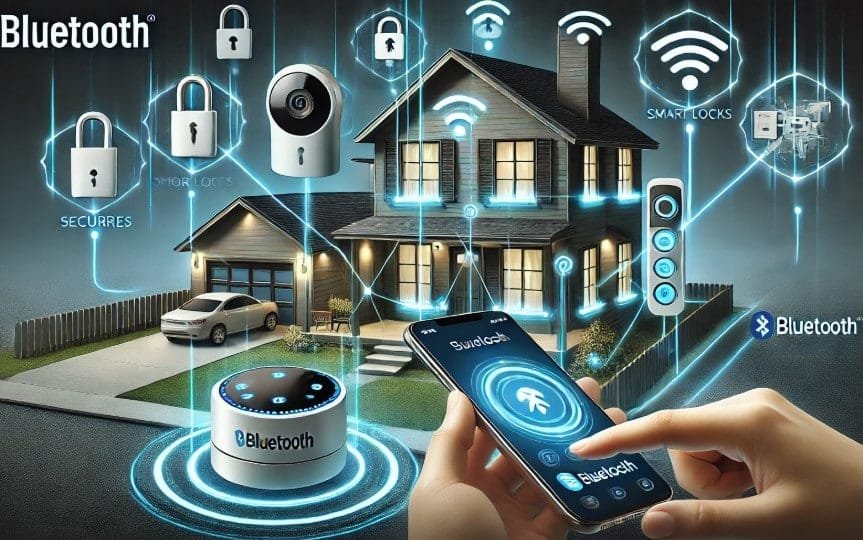
Hey there! With the rise of smart homes, security has become more critical. Bluetooth smart home devices are a fantastic way to boost your home’s security without breaking the bank. Let’s explore how to maximize your security using these nifty gadgets.
Choosing the Right Bluetooth Smart Home Devices
Types of Bluetooth security devices
Bluetooth devices offer various options for securing your home. Smart locks, for instance, allow you to control access to your home with your phone. Security cameras monitor your home and send you alerts if something’s up. Motion sensors can detect any unusual activity around your home.
Factors to consider when selecting devices
Compatibility is key when choosing Bluetooth security devices. Make sure the devices you pick can work with your existing smart home system. Battery life is another crucial factor—you don’t want your security devices dying on you at the wrong time. Also, consider the range and connectivity of the Bluetooth signal to ensure all areas of your home are covered.
Setting Up Your Bluetooth Smart Home Devices
Initial setup and installation
Setting up your Bluetooth smart home devices is pretty straightforward. Follow the manufacturer’s instructions to install and position your devices for the best coverage. Place your security cameras where they can capture the most comprehensive view and your motion sensors where they’re most likely to detect movement.
Connecting devices to your home network
Once your devices are in place, pair them with your smartphone or a central hub. To avoid connectivity issues, make sure you have a strong Bluetooth signal. This might mean placing your hub in a central location or ensuring your devices are within the recommended range.
Enhancing Security Features
Using multi-factor authentication
Multi-factor authentication adds an extra layer of security to your smart home. Set up authentication methods such as fingerprints or facial recognition to access your security devices. This ensures that even if someone gets hold of your phone, they still can’t control your home’s security.
Regular firmware updates
Keeping your devices updated is crucial for security. Manufacturers often release firmware updates to fix vulnerabilities and improve performance. Check regularly for updates and install them to keep your devices secure.
Monitoring and alerts
Set up real-time notifications to stay on top of any security alerts. This way, you’ll get instant updates if something unusual happens at home. Most devices allow you to customize these alerts so you’re not bombarded with unnecessary notifications.
Best Practices for Bluetooth Smart Home Security
Securing your Bluetooth network
Your Bluetooth network is the backbone of your smart home security. Use strong, unique passwords for your devices and enable encryption where possible. This makes it harder for intruders to access your network and devices.
Physical security measures
The physical placement of your devices is just as important as digital security. Ensure your security cameras and motion sensors are out of reach and hard to tamper with. This prevents potential intruders from disabling them.
Regular maintenance and checks
Perform routine inspections and tests on your security devices. Check for signs of wear and tear and make sure everything is working correctly. Regular maintenance helps catch issues early before they become big problems.
Troubleshooting Common Issues
Connection problems
Sometimes, Bluetooth devices can have connection issues. If you’re having trouble pairing a device, try resetting it or moving it closer to your hub. Signal interference from other electronics can also cause problems, so keep your devices away from other wireless gadgets.
Battery and power issues
Battery life is crucial for your security devices. Regularly check and replace batteries as needed. Consider power backup options like rechargeable batteries or connecting devices to a constant power source to avoid downtime.
Device malfunctions
If a device isn’t working correctly, try troubleshooting it by checking the manufacturer’s guidelines. Often, a simple reset or firmware update can fix the problem. If issues persist, contacting customer support might be necessary.
Advanced Security Tips
Integrating with other security systems
For enhanced security, integrate your Bluetooth devices with other systems, such as alarms or professional monitoring services. This creates a more comprehensive security setup that can offer better protection.
Customizing security settings
Tailor the settings of your devices to suit your needs. Adjust the sensitivity and range of your motion sensors, and set up user permissions to control who can access your security system. Customization ensures that your security setup works best for your specific situation.
Using third-party security apps
Third-party security apps can offer additional features and enhancements for your Bluetooth devices. To boost your security, look for apps that provide better monitoring, alerts, and integration with other smart home devices.
FAQ Section
Can Bluetooth smart home devices be hacked?
While no system is completely hack-proof, using strong passwords, enabling encryption, and updating your firmware can significantly reduce the risk of hacking.
What should I do if my Bluetooth device keeps disconnecting?
Try moving the device closer to your hub or reducing interference from other electronic devices. Resetting the device or updating its firmware can also help resolve connectivity issues.
How often should I update my Bluetooth security devices?
Check for updates at least once a month. Regular updates ensure that your devices have the latest security patches and improvements.
By following these tips and best practices, you can maximize the security of your home with Bluetooth smart home devices. Stay safe and enjoy the peace of mind of a well-secured smart home!